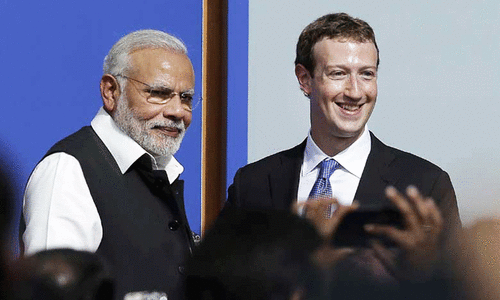JUST like cigarette packets, tweets may also now come with warning labels. In May, Twitter for the first time flagged two tweets by US President Donald Trump in which he claimed that mail-in ballots were prone to fraud. Now this is by no means the first time Trump has been, shall we say, economical with the truth, but this was indeed the first time that Twitter added a link under his tweets which refuted his claims.
Then in early November, just days before the US elections, about half of Trump’s tweets were similarly fact-checked and often marked as ‘misleading’, which is a polite way of saying that he was either ignorant or lying through his teeth. Maybe both.
Outraged, His Orange Eminence went so far as to sign an executive order, clearly targeted at Twitter, removing some of the legal protections enjoyed by social media companies after claiming they had ‘unchecked power’ to edit the views of their users. Twitter didn’t get cowed and in the two days after Election Day it added similar ‘warning labels’ to nine of his tweets.
While we understand that Twitter is a US-based company and that, given the US elections are an event of global importance, misinformation coming from the president of the United States is indeed dangerous, valid questions were raised as to whether this would be a one-off and limited to Trump and the United States — or was this the beginning of a more widespread action against misinformation?
Fake news is a central part of the Sanghi info ecosystem.
Both those questions have now been answered, as the second person after Trump to be publicly called out by Twitter for spreading misinformation is none other than the BJP’s IT cell boss Amit Malviya. During the ongoing farmers’ protests in India, Congress president Rahul Gandhi tweeted a now iconic picture of an Indian policeman swinging a baton at an elderly Sikh farmer, to which Malviya responded with a ‘propaganda or reality’ post in which he posted a cropped video purportedly showing that the man was not in fact struck. Twitter promptly took note and labelled the tweet as ‘manipulated media’, giving Mr Malviya the dubious distinction of being the first Indian to be crowned thus.
As I write this, a tweet by Vivek Agnihotri, a filmmaker known less for his work and more for his Hindutva vitriol, has also been similarly flagged, making him the second Indian to have his tweet labelled as containing ‘manipulated media’. Interestingly, the tweet in question was from August, which means that Twitter is not just marking new tweets, but also going through older ones.
If that’s the case then they’re going to have their work cut out for them because fake news is a central part of the Sanghi information ecosystem.
Mr Malviya is himself no less than the lord of a legion of liars, otherwise known as the BJP IT cell. This is the same cell that Amit Shah proudly said “can keep making messages go viral, whether they are real or fake, sweet or sour”. This is of course the stock-in-trade for these fakirs of fakery and merchants of misinformation: malicious campaigns are started on social media which are then eagerly amplified by devoted supporters and then mainstreamed and validated by the jesters of genocide who now seemingly make up a majority of the Indian electronic media.
The falsehood is thus given the illusion of credibility, coming as it now does from multiple sources each confirming the other, and is eagerly consumed by millions of viewers who see it all as the confirmation of already deeply held ideological beliefs. This has real-world consequences as we see in repeated lynchings, riots and of course the recently passed ‘love jihad’ law. All these cases find their genesis in a lie spread by this ecosystem, usually originating on social media and/ or WhatsApp.
Since it works so well in the domestic Indian market, and since easy successes breed complacency and laziness, we find the Indian media routinely being humiliated on the international front when breathlessly reporting on the civil war that wasn’t in Karachi or, more significantly, inventing planes that their air force ‘shot down’ after Balakot. No wonder then that their efforts at funnelling this propaganda to other countries are so laughably bad: recently, the EU disinfo lab uncovered a network of 265 sites operating in 65 countries, aimed at influencing foreign opinion, which were all run by an Indian company called the Srivasta group.
As dangerous as this sounds, a cursory examination of these sites shows them to be designed and handled in a laughably amateurish way with the content/ propaganda so badly put together that no one with an iota of sense would take it seriously. Even domestically, the farmer’s protests are showing the limits of what disinformation campaigns can achieve before they result in diminishing returns as those thus targeted are responding with great energy and organisation. Perhaps this time the Lords of Lies has bitten off more than even they can chew?
The writer is a journalist.
Twitter: @zarrarkhuhro
Published in Dawn, December 7th, 2020















































